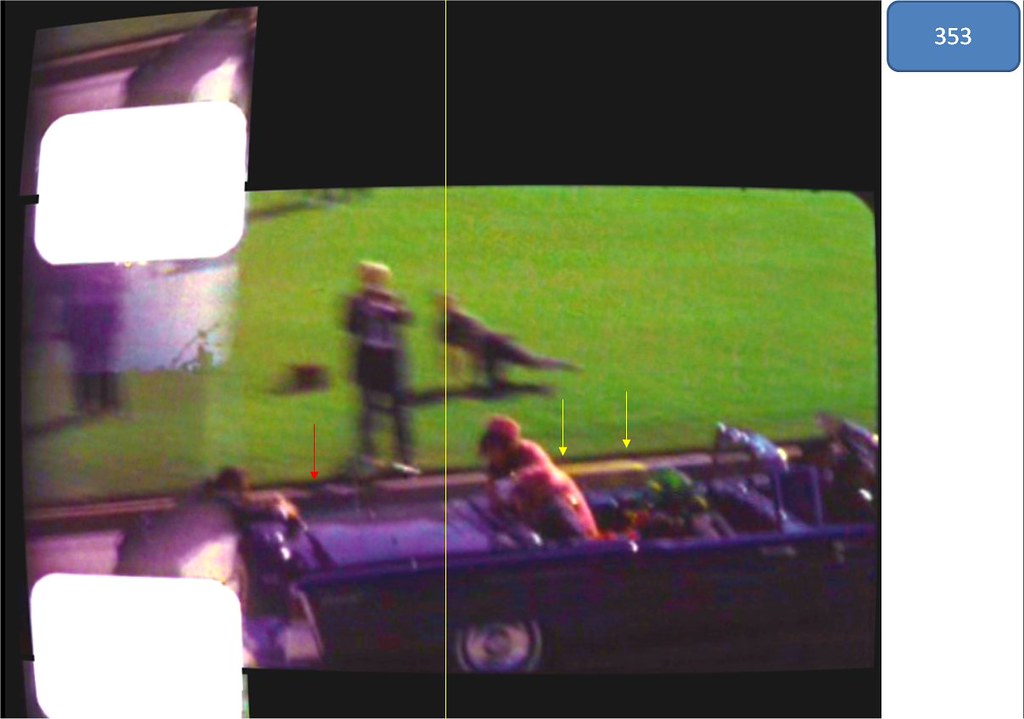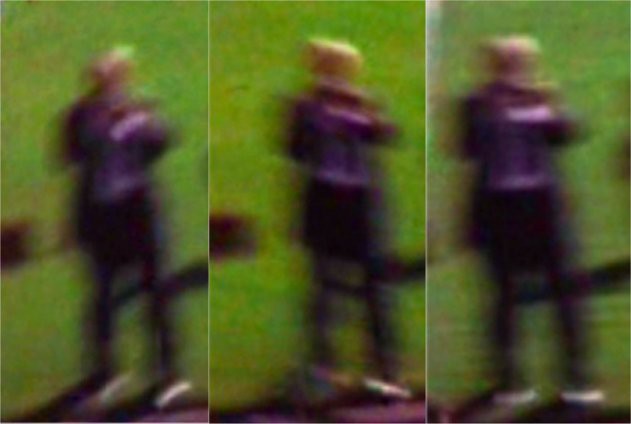Post by Herbert Blenner on Feb 14, 2019 20:43:00 GMT -5
Follow the Yellow Curb Marker
by Herb Blenner | Posted February 24, 2014
The Warren Commission published Zapruder frames Z-171 through Z-334. These official frames exclude Z-352 through Z-357, which are the subjects of this study. However, the following evidence of alteration may not be present on the unpublished frames held by the authorities. So our copy of the Zapruder film may be the malicious work of a prankster. Alternatively the presence of this evidence of alteration on officially held frames of Z-352 through Z-357 would stand with the published frames containing evidence of alteration.

frames z352-z357
Frame Z-357 shows the right edge of the yellow curb marker separating two portions along the roadway. The boundary of the marker on the topside of the curb is perpendicular to the roadway. Three frames earlier, Z-354 shows that the right edge of this marker has a sharp boundary that is far from perpendicular to the roadway. Likewise the right edge of the marker on Z-353 also fails to be perpendicular to the roadway. However, now the same rightmost end of the marker is nearer the camera. This behavior is opposite of Z-354 where this end of the marker is farther from the camera.


The topside of the curb on frames Z-353 and especially Z-354 appear thicker than the topside of the curb on other frames of this sequence. However, the darkened strip between the topside of the curb and the green grass has unchanging thinness. These observations disallow motion blurs as causing selective thickening of the topside of the curb on frames Z-353 and Z-354.

Frames Z-353, Z-354 and Z-355 show off-white bands across Altgens' ankles. On Z-353 the bands slope downward from our left to right. The bands on Z-354 slope upward upon viewing from our left to right. Z-355 shows the bands with nearly horizontal slopes. When viewed at the Norm frequency of 18 frame per second the rapidly wiggling bands would be comical if it were not so sad.
Unlike these graphics which display a sequence of time-frozen pictures, Zapruder's camera recorded all motion during each individual 27-millisecond exposure. So true frames of Z-353, Z-354 and Z-355 would show significant blurs caused by half the interframe motion of the bands. The absence of this physically necessary blurring further discredits Z-353, Z-354 and Z-355.



